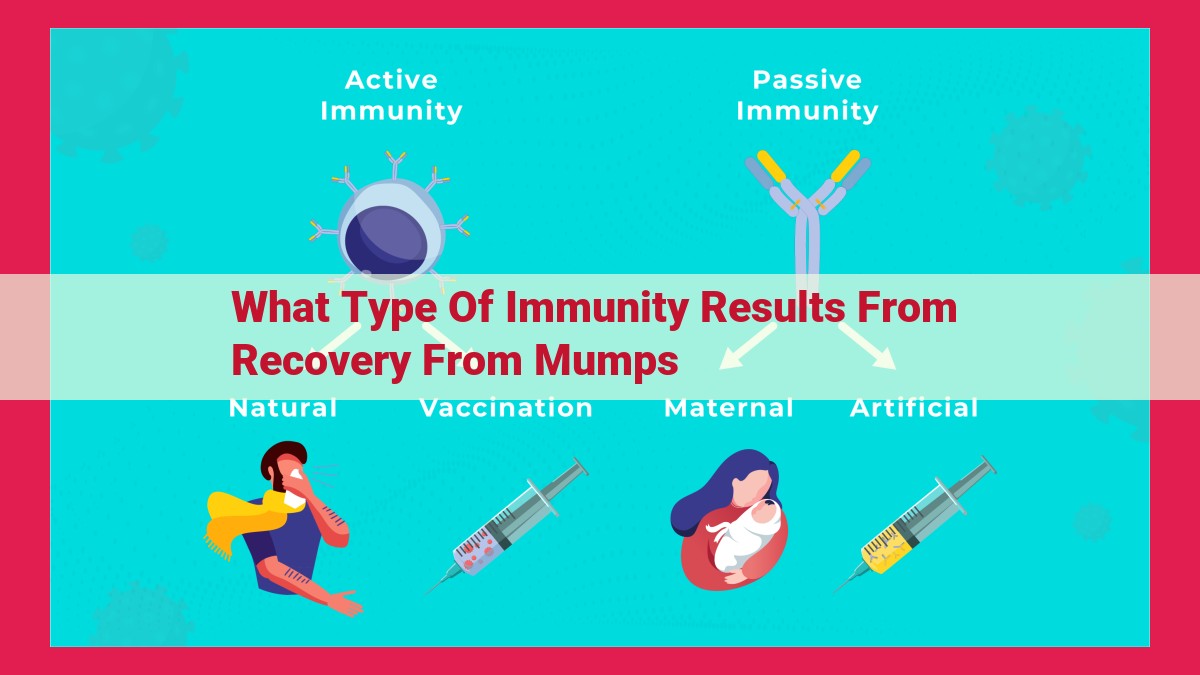Understanding Mumps Immunity: Long-Term Protection Explained

Recovery from mumps results in acquired immunity, characterized by the production of antibodies and memory cells specific to the mumps virus. This immunity provides long-term protection against re-infection and is mediated by memory cells that activate a rapid antibody response upon exposure to the virus.
Innate Immunity
- Phagocytosis and inflammation: How the body’s first line of defense eliminates pathogens
- Short-term duration: Temporary protection until the acquired immune system takes over
Understanding Innate Immunity: Your Body’s First Line of Defense
Our bodies possess an incredible defense mechanism known as innate immunity, which acts as a tireless guardian, constantly scanning for and eliminating potential threats. This first line of defense is activated swiftly, providing immediate protection until the more specialized acquired immune system can mount a tailored response.
One key aspect of innate immunity is phagocytosis, a process where specialized cells called phagocytes engulf and destroy foreign invaders like bacteria and viruses. These phagocytes identify and capture pathogens, ensuring they are neutralized and eliminated to prevent infection from spreading.
Alongside phagocytosis, inflammation is another hallmark of innate immunity. When a foreign agent is detected, the body releases inflammatory mediators that trigger a cascade of events. These include increased blood flow and permeability, allowing immune cells and protective proteins to reach the site of infection. While inflammation can cause temporary discomfort, it plays a crucial role in limiting the spread of pathogens and initiating the healing process.
Short-term Duration: Holding the Fort Until Reinforcements Arrive
Innate immunity provides immediate protection, but its effects are temporary. It acts as a holding force, buying time for the acquired immune system to develop and mount a more specific and long-term immune response. Once the acquired immune system is fully activated, innate immunity takes a backseat, allowing the more specialized antibodies and memory cells to take over and provide lasting immunity.
Acquired Immunity: The Body’s Long-Term Defense Guard
When your body faces an infection, it has two lines of defense: innate immunity and acquired immunity. While innate immunity provides a rapid but temporary defense, acquired immunity is the body’s meticulous and sustained response. It’s like a highly trained army, specifically designed to target and eliminate specific invaders.
Antibody and Memory Cell Production: The Pillars of Acquired Immunity
The cornerstone of acquired immunity lies in the production of antibodies. These specialized proteins are tailor-made to recognize and latch onto the surface of specific pathogens, such as the infamous mumps virus. Once these antibodies bind to the virus, they signal to immune cells to destroy the pathogen, effectively neutralizing the threat.
But it doesn’t end there. Alongside antibodies, acquired immunity also produces memory cells. These cells are the immune system’s secret weapon, providing long-term protection. When the body encounters the same pathogen again, memory cells quickly recognize it and trigger a rapid and robust immune response, preventing re-infection.
Specificity: A Targeted Approach to Infection
Unlike innate immunity which targets broad threats, acquired immunity is remarkably specific. Its antibodies and memory cells are meticulously designed to target the specific pathogen that caused the initial infection. This targeted response allows the body to mount a focused and efficient defense against a particular invader.
Acquired immunity is the body’s strategic response to infection, providing long-term protection through antibody and memory cell production. By mounting a specific and targeted defense against pathogens, acquired immunity plays a pivotal role in keeping us healthy and protected.